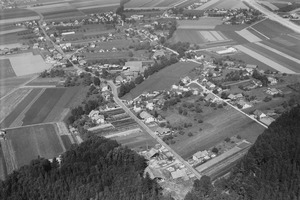Obergerlafingen facts for kids
Quick facts for kids
Obergerlafingen
|
||
|---|---|---|
|
||
| Country | Switzerland | |
| Canton | Solothurn | |
| District | Wasseramt | |
| Area | ||
| • Total | 1.51 km2 (0.58 sq mi) | |
| Elevation | 462 m (1,516 ft) | |
| Population
(Dec 2020 )
|
||
| • Total | 1,247 | |
| • Density | 825.8/km2 (2,139/sq mi) | |
| Postal code |
4564
|
|
| Surrounded by | Gerlafingen, Koppigen (BE), Kriegstetten, Recherswil, Utzenstorf (BE), Zielebach (BE) | |
Obergerlafingen is a small and friendly municipality (a type of town or local area) in Switzerland. It is located in the canton of Solothurn, within the Wasseramt district. It's a great place to learn about Swiss life!
Contents
History of Obergerlafingen
Obergerlafingen has a long history. The town was first written about in official documents way back in the year 1278. Back then, its name was spelled Oburgeroluingen.
Geography and Landscape
Obergerlafingen covers an area of about 1.52 square kilometers (0.59 square miles). A large part of this land, almost half, is used for farming. This means you'll see lots of fields and pastures.
About one-fifth of the area is covered by forests. The rest of the land is where buildings and roads are located. This includes homes, businesses, and places for sports.
The municipality is nestled between two rivers: the Emme and the Oesch. Obergerlafingen is known as a "linear village." This means its buildings are mostly spread out along a main road.
Obergerlafingen's Coat of Arms
The coat of arms for Obergerlafingen is quite simple but meaningful. It shows a red shield with three silver stars placed one above the other. These symbols represent the town's identity.
People and Population
Obergerlafingen is home to over 1,000 people. Most residents speak German, which is the main language in the area. A smaller number of people also speak Italian or French.
The population includes both Swiss citizens and people from other countries. The community has a mix of families, young adults, and older residents. In 2000, about 26.6% of the people living in Obergerlafingen were born there.
The number of people living in Obergerlafingen has changed over time. You can see how the population has grown and changed in the chart below:

Economy and Jobs
Many people in Obergerlafingen have jobs in different areas. Some work in agriculture, which means they work with farming. Others work in the manufacturing or construction industries. This includes making things in factories or building new structures.
A good number of people also work in the service industry. This can include jobs in shops, restaurants, transportation, or even as scientists and technical experts.
Many residents of Obergerlafingen travel to other towns for work. Most people use a private car to get to their jobs. A smaller number use public transportation.
Religion in Obergerlafingen
In Obergerlafingen, people follow different religions. The largest groups are Swiss Reformed and Roman Catholic Christians. There are also people who belong to other Christian churches. Some residents do not belong to any church.
Education and Schools
Education is important in Obergerlafingen. Many adults have completed their upper secondary education. This is like high school. Some have also gone on to higher education at a university or a specialized college.
While some students from other towns come to Obergerlafingen for school, most students from Obergerlafingen attend schools outside the municipality.
Images for kids
See also
 In Spanish: Obergerlafingen para niños
In Spanish: Obergerlafingen para niños






